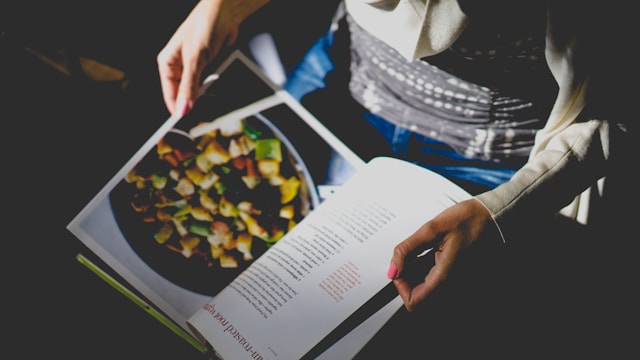Table of Contents
- Introduction
- 17th Century English Recipes
- Classic English Dishes from the 1600s
- Influence of Sugar, Spices and the New World
- French 17th Century Cuisine
- The Refined Tastes of 17th Century French Cooking
- French Recipes from the 1600s
- Italian Renaissance Recipes
- Italian Culinary Innovations of the 1600s
- Iconic Italian 17th Century Recipes
- Cooking Methods & Utensils
- How 17th Century Dishes Were Prepared
- Preserving Techniques of the Era
- Typical 17th Century Meals
- What Was Eaten for Breakfast, Lunch & Dinner?
- Special Occasion and Holiday Fare
- Conclusion
The 17th century marked a pivotal era in culinary history, shaped by global exploration, cultural exchange, and innovative cooking techniques. Recipes from this time capsule provide a fascinating glimpse into the traditions, crops, and trade that defined meals across Europe and beyond. What made 17th century cuisine so innovative and distinct from other periods was the intersection of long-established regional flavors with an influx of new ingredients from the Americas, increased availability of spices and sugars, and the creative spirit of the Renaissance.
17th Century English Recipes
Classic English Dishes from the 1600s
At the heart of 17th century English cuisine were hearty, rustic dishes that showcased the bounty of the countryside. Meat pies and pastries were particularly popular, often incorporating robust fillings like beef, lamb, or game fowl enriched with gravies and savory seasonings. One iconic recipe was the Christmas pie, a massive stuffed pastry served at holiday feasts containing a mixture of meats, mushrooms, eggs and spices.
“The Crust was incredibly Bak’d, and defyedthe Portract of Mrs Cromwell, and indeed the Tongues of all Current Critiques, it afforded at least a Windore’s Repast” – Robert May, describing the Christmas pie served at the Protector’s table in 1658
Puddings like the creamy, lemon-infused syllabub and vegetable pottages (thick stews) were other quintessential English dishes of the era. The humble pottage was a ubiquitous dish among the lower classes, often containing inexpensive root vegetables, grains like oats or barley, and whatever meats or greens were on hand.
Influence of Sugar, Spices and the New World
Trade routes expanded greatly during the 17th century, ushering in an influx of exotic spices, tropical fruits, and perhaps most significantly – sugarcane from the Caribbean colonies. The arrival of affordable sugar transformed the English palate, allowing for the rise of sweetened baked goods, jams, and preserves. Warm spiced wines, gingerbread, and candied citrus rinds became wildly popular indulgences across social classes.
The Columbian Exchange also introduced New World crops like turkey, corn, beans, squash and tomatoes to English kitchens. These unfamiliar ingredients were initially met with suspicion but eventually wove their way into classic recipes like:
- Pumpion (pumpkin) pie
- Sucket (fritter) made with cornmeal batter
- Turkey legs stewed with chestnuts and prunes
French 17th Century Cuisine
The Refined Tastes of 17th Century French Cooking
While rustic English fare reflected the crops and game of the countryside, 17th century French cuisine catered to the lavish tastes of nobility. Opulent banquets and feasts showcased refined haute cuisine traditions that took root in the grand courts and manors across the country.
Professional chefs and kitchen brigades codified complex dishes, sauces, and culinary techniques that became foundations of modern French cooking. This era institutionalized principles like:
- Sauce-making: Velvety velouté, robust espagnole, and other “mother sauces”
- Cooking techniques like sautéing, braising, and glazing
- Artful plating and garnishing of dishes
The 1600s also saw the publication of influential cookbooks that documented these gastronomic accomplishments, such as Le Cuisinier François by the renowned chef François Pierre La Varenne in 1651.
French Recipes from the 1600s
Popular dishes among the French elite included:
- Meat stews like Civet de lièvre (jugged hare), cooked for hours in robust wines
- Vegetable gratins like Pain Perdu aux Navets (savory French toast with turnips)
- Rich egg and cream-based entrées like Œufs à la Bourguignonne
The 17th century also marked the birth of modern pastry arts, elevating baked goods from humble bread loaves to architectural showpieces for aristocratic tables. Pâtissiers crafted intricate gâteaux, petits fours, flaky vols-au-vent, and other indulgent pastries sweetened with fruits, nuts, and newly-affordable sugars.
Italian Renaissance Recipes
Italian Culinary Innovations of the 1600s
It’s no surprise that vibrant 17th century Italian cuisine was profoundly shaped by the Renaissance – that cultural rebirth which championed art, science, and the pursuit of knowledge. Culinary innovations flourished, documented in important recipe books like Singolare dottrina by Domenico Romoli published in 1560.
The introduction of foodstuffs from the New World like tomatoes, potatoes, bell peppers, and maize allowed the Italians to showcase their creativity and finesse by weaving them into traditional Mediterranean fare. This era saw the birth of iconic Italian staples including:
- The first recognizable pastas and shapes like gnocchi
- Risottos and other rice dishes
- Sauces like marinara, harnessing the new tomato
Iconic Italian 17th Century Recipes
While some dishes were new inventions, many represented creative reinterpretations of long-standing recipes enhanced by the new crops. A few examples:
- Risi e bisi (rice and peas) – this simple peasant dish was elevated by using the fresh green peas imported from the Americas instead of Mediterranean chickpeas.
- Minestra di sedani (celery soup) – recipes for vegetable soups like this existed for centuries but benefitted from the addition of tomatoes, lending a bright acidity and fresh flavor.
- Torta di riso (baked rice tart) – an early precursor to Italian rice pies and puddings, subtly infused with cinnamon and sweetened with honey or sugar.
Cooking Methods & Utensils
How 17th Century Dishes Were Prepared
Reconstructing recipes from the 1600s requires an understanding of the rustic cooking methods and kitchen equipment available at the time.
Most households, from modest cottages to grand manors, would have a variation of a hearth or open fire pit for hot ashes and cast iron pots. Baking ovens were uncommon except among the wealthy or in bakeries. More frequently, foods were cooked over direct flames using:
- Iron cauldrons and pots suspended over fires for stews and porridges
- Hooped iron grills to broil or grill meats
- Metal baking plates or bread ovens to bake flat breads and pies
Roasting meat using a spit and dripping pan in front of the open fire was another common technique. All meal preparation was labor-intensive, from plucking feathers to grinding grains and spices by hand using a mortar and pestle.
Preserving Techniques of the Era
In an age before modern refrigeration, a variety of creative food preservation methods were crucial for extending the shelf-life of ingredients:
- Salting, smoking, and drying to cure meats and fish
- Root cellars and cool pantries to store some produce
- Fruit preserves and jams sealed in wax to capture seasonal bounties
- Pickling fruits and vegetables in brine or vinegar solutions
While seemingly basic by today’s standards, these preservation methods allowed homemakers to sustain households through the lean winter months between harvests.
Typical 17th Century Meals
What Was Eaten for Breakfast, Lunch & Dinner?
Daily meal patterns in 17th century Europe varied considerably based on wealth and social class:
For the Nobility/Upper Classes:
- Breakfast: Consisted of thick bread slices called “manchets,” sopped in ale, wine or consumé broth
- Dinner (midday meal): A lavish spread with multiple removes or courses of various meats, baked dishes, salads and pies paraded out sequentially
- Supper: A lighter evening meal of more modest fare
For the Lower/Working Classes:
- Breakfast: Porridges made from grains and cereals, with milk or ale if available
- Dinner: The main hot meal of a thick stew/pottage using regionally-available ingredients (potatoes, grains, legumes, whatever meat was affordable)
- Supper: Perhaps just bread and cheese, or cold pottage leftovers.
Special Occasion and Holiday Fare
On holidays and special occasions, families of means would spare no expense in putting together grand, multi-course feasts:
Christmas & Easter
- Goose or beef as the centerpiece main
- Mince pies, plum porridge, frumenty (wheat pudding with dried fruits and eggs)
- Wassail or mulled cider for drinking
Weddings
- Elaborate bride’s pies or cakes with intricate molded designs
- Ample wine and ales
- Baked and sugared delicacies
These lavish banquets allowed hosts to flaunt their prosperity through a parade of rare and expensive ingredients and a dazzling display of the family’s finest ceramics and linens.
The recipes and cooking methods of the 17th century reveal so much more than just ingredients and techniques. They provide an insightful window into the landscape, trade, and cultural influences that shaped life during this era across Europe.
From the Renaissance spirit of innovation in Italy, to the opulent banquets of the French elite, and hearty sustenance of the English countryside – each region’s cuisine tells a unique story. Modern gastronomy continues to show traces of these 1600s culinary roots through beloved dishes that have endured centuries.
While we may never be able to recreate recipes with perfect historical accuracy, exploring the flavors of the 17th century allows us to experience a taste of the past. These recipes represent treasured cultural and historical artifacts, waiting to be dusted off and revived by intrepid culinary archaeologists.

